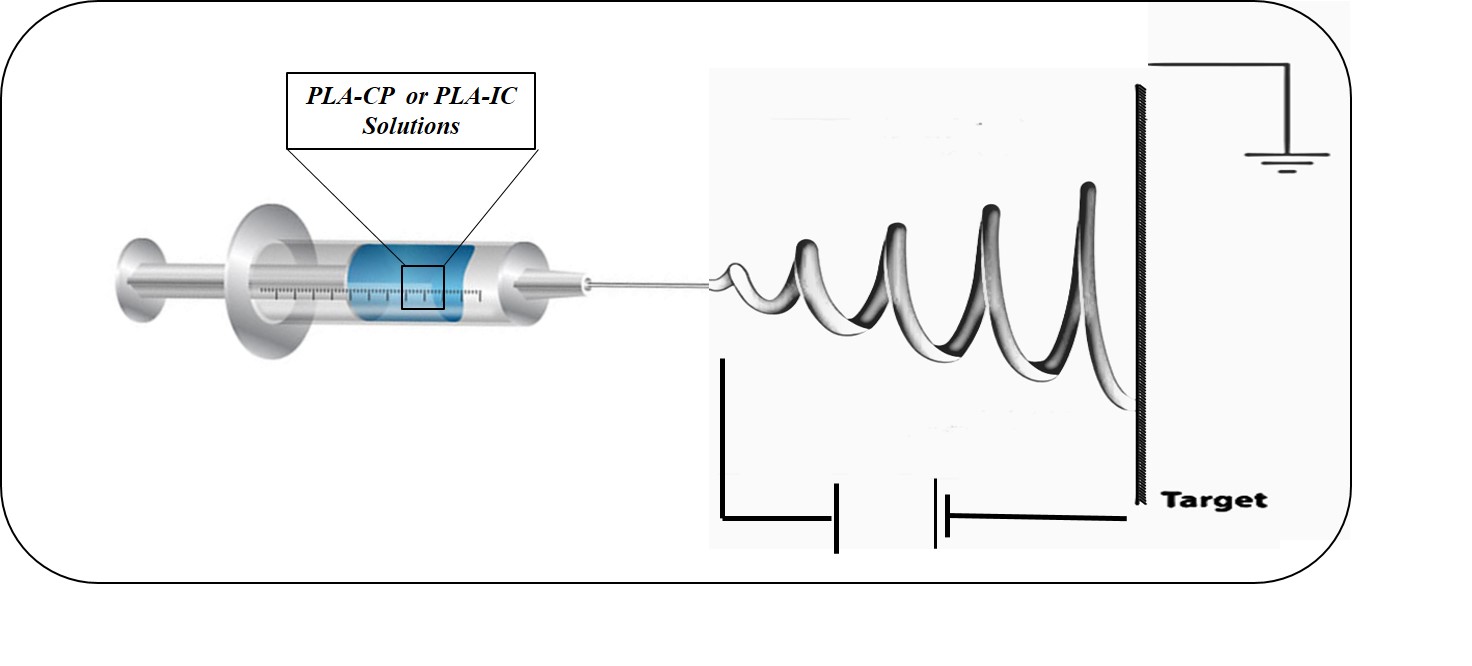 |
|
The fluoroquinolone ciprofloxacin (CIP) hidrophobic drug and its inclusion complex, β-cyclodextrin-CIP (IC) were encapsulated into micro- and nano-fibers of polylactic acid (PLA) via electrospinning technique to evaluate CIP release. The IC was characterized by 13C solid-state nuclear magnetic resonance (SSNMR) and thermogravimetric analysis (TGA) to investigate the inclusion complex formation and fiber encapsulation. The PLA-IC and PLA-CIP fibers were characterized by TGA, Raman spectroscopy and scanning electron microscopy (SEM). The release behavior of CIP and loading efficiency percentage (LE%)were evaluated via UV-Vis at 276 nm. The LE% of CIP was higher to PLA-IC with respect to the fibers with only CIP. IC release behavior was more sustained from PLA-IC fibers versus PLA-CIP as an effect of the IC formation. The CIP was released in a more prolonged and sustained manner from PLA-IC fibers versus PLA-CIP fibers. Different PLA-CIP and PLA-IC fiber diameters did not affect the release profile. The experimental results of CIP and IC were approximated with three commonly used semi-empirical models: Korsmeyer-Peppas, zero-order, and first-order kinetic equation to explain the release mechanism.
Keywords: cyclodextrin, electrospinning, inclusion complex, fiber, kinetics model.
|
|
 |

